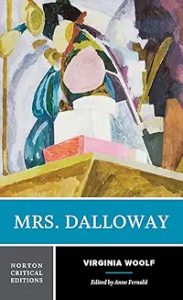Mrs. Dalloway by Virginia Woolf 1925
“Mrs. Dalloway said she would buy the flowers herself”. With that inocuous line, Virginia Woolf began her revolutionary novel published in 1925. As she had opined in her nearly simultaneously published book of literary criticism, “The Common Reader”, Woolf was fed up with the traditionally structured and plotted novels of Wells, Bennett, and Goldsworthy and was embarking on a new model for the novel, a style that focused on the soul, the spirit, the inner being, and Dalloway fulfilled that mission beautifully.
From the opening line to the end of the party, we spend a day with Clarissa Dalloway and a cast of characters who cross her path as she winds through London on various errands. There is Peter Walsh, the love of her younger days whom she spurned and who then went off to India. Returning to London, he is once again smitten. There is her husband, Richard, a government functionary who sadly will never be a Minister, and her daughter, Elizabeth a late teen who is beginning to understand that the world offers many different paths especially under the influence of Miss Kilman, a rather embittered, homely outsider. There is Sally Seton, the rebellious dear friend of Clarissa’s youth who is now Lady Rossiter with five young sons. There are Hugh Whitebread and Sir Richard Bradshaw, Lady Bruton, and a bevy of other aristocrats going through the motions in post-WWI London, and most of all, there is Septimus Warren Smith who went off to war in the midst of a promising career and returned with an Italian wife and a severe case of shell shock.
Through all these encounters we are treated to a non-stop, fire hydrant-like flow of internal thoughts and observations by Clarissa and also by others as Woolf talently juggles the narrators and the subjects. Her brilliant achievement is that she shows us that on this seemingly routine day in June there is no such thing as an insignficant person; there is no such thing as a usual day. The book is dominated by the internal questioning of all these characters in the mode of “what if”. What if Peter and Clarissa had married? What if Clarissa and Sally had allowed their physical attraction to become a lesbian affair? What if Septimus had been correctly diagnosed by Dr. Holmes or treated more expeditiously by Dr. Bradshaw? What if, what if, what if!
I loved this book on re-reading it for perhaps the fourth time. If I’m granted the time, I look forward to reading it again and savoring Woolf’s exploration of the human mind and soul. She is truly a very special writer.



